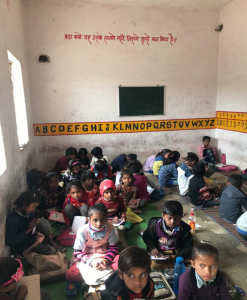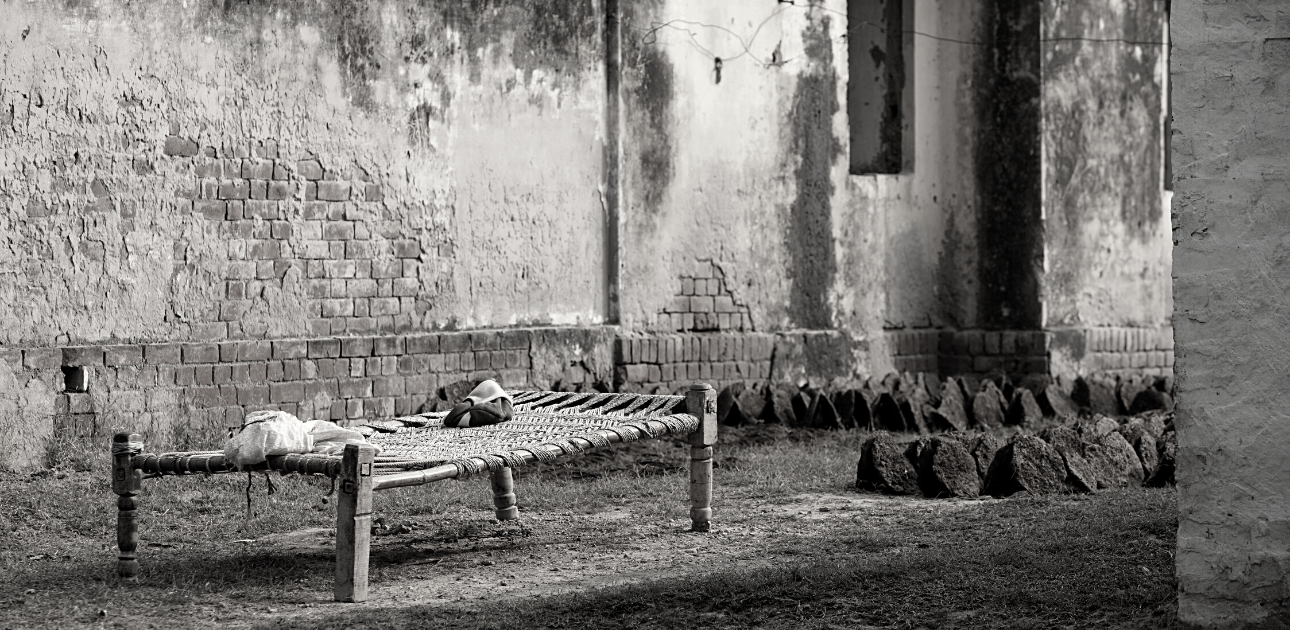It should not be normal to be killed before birth; it should not be normal to drop out of school after eighth standard; it should not be normal to be malnourished and anaemic; it should not be normal to die while giving birth; it should not be normal to have your whole life determined by where and to whom you are born.
—–
I fall in the middle, the middle of the extreme spectrum of privilege and inequality in our nation. I was born in Delhi, the national capital of India. My parents had a house that we could call our own. We had enough to eat well. I was exposed to extracurricular activities at school from a young age, and received all the support from my parents to pursue what I wanted to. I studied at an English medium private school, studied Economics at the Delhi University, and have been working in the development sector for the past four years.
One end of this spectrum is the top one per cent, which is represented well (one could say a little too well) in mainstream media and cinema. I also saw a lot of people belonging to this one per cent in college, in my neighbourhood and among friends.
Now, at 25 years of age, I am seeing the other extreme. Ten months back, I moved to the Chhatarpur district in Madhya Pradesh. It is one of the 112 aspirational districts of the country, ‘aspirational’ being code for underdeveloped and backward. In my time in Chhatarpur, I have visited innumerable villages, and had the opportunity to observe various government systems and institutions like healthcare centres, schools, panchayats, anganwadi centres, all of which are in place for citizen welfare. I have also interacted with multiple stakeholders to understand the nuances in the working of these systems. I do not want to be a pessimist and say that things here will never get better; I am hopeful that they will, but I do want to highlight that at this time, they are quite bad.
Also read: Union budget 2022-23: which of the inequalities will it impact?
Mahatma Gandhi had famously said: “The future of India lies in its villages.”
The on-ground reality makes me wonder what this future will look like. Time and again, the difference between rural and urban life strikes me, and I ponder over what my life would have looked like if I were born in a village in Chhatarpur.
What my life in Chhatarpur would have been like
As a girl child, if allowed to live (there is a preference for the male child so strong that people have multiple kids in the hope of conceiving a boy), I would most likely be stunted and anaemic. My family’s monthly household income would be around Rs. 6,000 rupees. We would be multi-dimensionally poor and nutrition-deprived; hence I would not get to eat fruit, dry fruit or sufficient quantities of dairy products.
I would be expected to fetch water from the handpump six km away from my household every single day, because only women in the family engage in household chores. After all, I need to be trained for all my responsibilities post-marriage. My house wouldn’t have any piped water, which ideally should have been provided under the Nal Jal Yojana because of the lack of a water source or the panchayat secretary demanding a bribe. We would possibly have a pucca Pradhan Mantri Awas Yojana house, but without the walls painted because the Rs. 1,20,000 sanctioned by the government is not enough to cover all costs.
Before turning six years old, I would go to the anganwadi centre near my house. It would be scarcely open, and there would be no electricity on most days. It would be very difficult to sit there in the heat, they would serve one meal instead of the two they are supposed to, and I would come back, without learning anything at all.
I do not want to be a pessimist and say that things here will never get better; I am hopeful that they will, but I do want to highlight that at this time, they are quite bad.
I would then enrol at the government school in the village but that school will have no benches. I would sit on the floor and on most days, wait for the teacher to come. Many days, I would sit in multi-grade classrooms and not learn anything. Even in eighth standard, I would not be able to write the correct spelling of ‘female’. My school would not have tap water or electricity. Outside my school, people would dump all the garbage, and it would be both unhygienic and unsanitary.



Even after going to school, I would have to engage in the majority of the household chores. Since the higher secondary school would be ten km away, my parents won’t be able to afford the transport and also would not like their daughter travelling so far. The most logical thing would be for me to drop out and not study post eighth standard.
Also read: As Lockdown turns One, let us Look at Gaps in our Social Welfare Architecture
My parents will find a match for me, and at 16 years of age, I will get married. (The government mandates the minimum marital age of 18 years, but that does not stop anybody). I am still a frail woman who is underweight, anaemic and burdened with all household chores. In a year, at 17, I would get pregnant, because what else does one marry for? Men also find it extremely difficult to use contraception and plan for a baby in this country.
As we celebrate Azaadi ka Amrit Mahotsav and move to an Amrit Kaal as declared by the Prime Minister, it becomes our imperative as a society to look at our villages, and figure out how to ensure a fulfilling life with equal opportunities for all citizens.
Then, I will have to register at the local anganwadi centre to avail the benefits of government schemes for safe pregnancy. I will be asked to submit countless documents, many of which, like the birth certificate, for instance, I will not have because the government never gave us one, and my parents were busy putting food on the table and struggling every day. The bureaucratic process and red tape will disincentive me from actually going through and getting the benefits which I rightfully deserve. The Accredited Social Health Activist might counsel me, conduct my haemoglobin test with a colour card, which is more often than not inaccurate; she might give me supplements or medicine that have already expired.
At the time of delivery, since the health centre near my house will be closed, I will call 108 for a free ambulance to the district hospital, but I will be asked for money, which we will end up paying.
My pregnancy will be complicated because I am anaemic; I will need blood, but the district hospital will not have blood, and both me and my child will die. (Madhya Pradesh has the highest infant mortality rate in the entire country.)
Also read: As COVID Spreads in Rural India, Crumbling Health Infrastructure Fails to Cope
Even if we survive, my child will be wasted or stunted, and the cycle will continue. Being a girl or boy will make little difference. If it is a girl, she will relive my life; if it is a boy, he will study maybe, but then come back to home because he is unable to find employment.
Our worst case is their normal
I understand that this might sound like the worst case, and that it is possible that things turn out better and I am that lucky one who gets the best anganwadi centre, a good school with invested teachers, parents who support me till high school and even college, or don’t get married at 17, but statistics tell us that the most likely outcome is the worst case.
Our worst case is their normal, and that is extremely scary. It should not be normal to be killed before birth; it should not be normal to drop out of school after eighth standard; it should not be normal to be malnourished and anaemic; it should not be normal to die while giving birth; it should not be normal to have your whole life determined by where and to whom you are born.
Article 21 of the Constitution guarantees the fundamental right to life and personal liberty to all persons. It guarantees the right of persons to life with human dignity. What dignity is there in living a life of impoverishment which is doomed to end in death, I wonder. As we celebrate Azaadi ka Amrit Mahotsav and move to an Amrit Kaal as declared by the Prime Minister, it becomes our imperative as a society to look at our villages, and figure out how to ensure a fulfilling life with equal opportunities for all citizens.
This piece is based on personal experiences, which are also supported by statistics.


